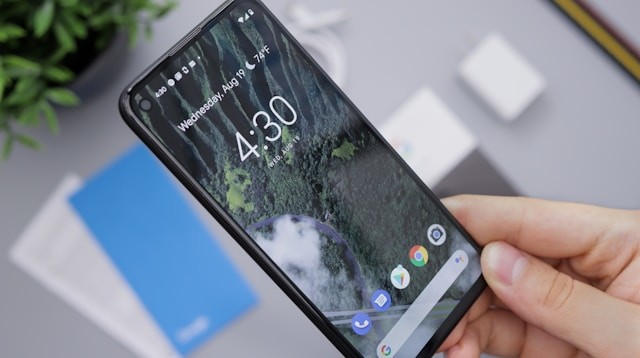Technology keeps changing how brands communicate with customers. Every click, swipe, and purchase creates a data point that reveals what people truly want. Through smart device feedback loops, companies can turn that constant flow of data into meaningful interactions. Readers of IoT-focused blogs know that connected ecosystems are not about gadgets alone—they’re about intelligence. Businesses that learn to act on this data gain more than insight; they earn loyalty. The era of guesswork is ending. Now is the time to build relationships through real-time understanding and tailored communication that reflects each user’s preferences.
What are Smart Device Feedback Loops?
At its core, a feedback loop transforms raw data into refined action. Smart devices collect information, send it for analysis, and trigger specific responses that match user habits. This cycle repeats itself, allowing brands to fine-tune every outreach effort. The process is not new, but the scale and precision are unmatched today.
According to IoT Analytics report in 2024, the number of connected IoT devices grew by about 13%, reaching 18.8 billion worldwide, and is expected to approach 40 billion by 2030. This explosive expansion demonstrates how deeply these systems have entered daily life and business operations.
Consider how a smart thermostat notes temperature changes. When linked with sales systems, it can suggest efficient energy products or services that align with user behavior. The same principle applies to wearables, connected cars, or even kitchen appliances. Each device shares insight that sharpens marketing accuracy.
This constant exchange between devices and marketers builds a two-way connection. Data no longer moves in one direction—it flows back, shaping future strategies. The smartest brands treat this as an evolving conversation, not a one-time survey.
To put it simply, here’s what makes these systems effective:
- Real-time data collection: Devices record instant feedback from user actions.
- Adaptive response: Systems adjust outreach based on this feedback.
- Ongoing improvement: Each cycle refines predictions and messages.
These points illustrate how feedback becomes the foundation of precision marketing.

Turn Real-Time Insights into Targeted Engagement
Speed defines success. When data arrives from a connected watch or smart speaker, marketers can respond almost instantly. A brand can send personalized offers the moment someone finishes a workout or enters a specific store. Timing and relevance merge, turning ordinary notifications into useful prompts.
Such agility requires coordination. Teams must analyze feedback quickly and align it with current campaigns. The result is a communication style that feels less like advertising and more like a conversation. That difference matters—it builds trust.
Companies using smart device feedback loops often notice stronger engagement rates because messages no longer interrupt users; they assist them. The loop ensures that each touchpoint adds value, helping customers make better decisions instead of pushing random offers.
Bridge Departments and Use Data as the Common Language
The alignment between two teams—especially sales and marketing—often determines how efficiently a company expands its reach. Understanding how to align your sales and marketing strategies through a unified data framework is what turns separate efforts into a single, coordinated motion. When these departments operate from different systems, inconsistencies arise, progress slows, and assumptions replace insight. But when both rely on shared data, collaboration becomes a steady, integrated process rather than a sporadic exchange.
Smart device analytics reinforce this connection by translating scattered metrics into real intelligence that both teams can trust. A feedback-based platform closes the loop, ensuring every decision reflects measurable performance, not speculation. This structured synchronization sharpens focus, improves coordination, and keeps campaigns aligned with tangible business outcomes.
For example, marketing teams can interpret device data to reveal user patterns, while sales uses that insight to create precise proposals. Instead of duplicating tasks, they contribute to a single, data-driven improvement cycle that enhances overall outcomes. Smart device feedback transforms alignment into a dynamic process of learning and adaptation.
By connecting these systems, companies evolve from reactive decision-making to proactive growth. The collaboration between departments becomes measurable, responsive, and efficient—replacing static reporting with actionable insight. The result is faster execution, smarter strategy development, and tangible business growth.
Connection Between Smart Device Data and Digital Marketing Channels
Smart device data flows naturally into digital platforms. When synced with ad networks or analytics dashboards, these insights help tailor every post, email, or campaign. The result is a coherent, data-backed strategy that feels personal yet scalable.
This approach shines on social platforms. Data from wearables or home devices can refine how brands choose posting times, tone, and even visuals. As social media management boosts engagement and reach, campaigns thrive when content meets the audience’s current mindset.
By integrating these datasets, marketers can predict ideal engagement moments. They can also compare audience reactions and fine-tune future efforts for consistency and authenticity.
The Demand for Hyper-Personalization
No generation expects relevance more than Gen Z. They trust brands that listen, respond fast, and adapt with precision. They grew up surrounded by smart technology, so they recognize when companies use it effectively.
The impact of tech-savvy Gen Z on marketing strategies is clear—they push personalization from a luxury to a necessity. They ignore mass messaging and reward real-time understanding. For them, data-driven personalization reflects respect, not intrusion.
Smart devices provide exactly that level of awareness. They create space for brands to anticipate, not react. Those who learn to read and act on these insights will not only reach Gen Z—they’ll stay ahead of every audience that follows.
Integrate Predictive Analytics and AI-Driven Outreach
Artificial intelligence expands what feedback loops can achieve. Data alone has limits, but predictive models uncover what customers may do next. AI identifies patterns, prioritizes leads, and triggers automated outreach at ideal moments.
This process saves time for human teams while improving accuracy. When algorithms anticipate customer needs, sales representatives can focus on deeper interactions. The human touch remains vital, but AI ensures that effort lands where it counts most.
For instance, an AI tool might recognize when a user’s smart fridge signals low supplies. That alert could prompt a personalized grocery offer before the shopper opens an app. Such anticipation turns routine marketing into meaningful service.
Through smart device feedback loops, brands no longer chase attention—they earn it. Predictive systems transform outreach from guesswork into precision. Every engagement becomes an answer to a real need rather than a broadcast in the dark.
Yet, success depends on human oversight. Teams must verify that automated suggestions respect customer boundaries. Data should empower, not pressure. When handled responsibly, predictive analytics can strengthen relationships and secure long-term trust.
The Future of Adaptive Sales Systems
The era of static marketing is over. Brands that act fast and think strategically will define the next wave of success. Smart device feedback loops transform everyday communication into purposeful dialogue between people and technology. They improve not just personalization but coordination across entire organizations.


1 thought on “Smart Device Feedback Loops that Power Personalized Sales Outreach”